Today’s Tune of the Week is Flames Upon the Cuyahoga, a new old-time modal tune from Chuck Levy which can be found on his 2006 CD “Scratching and Clawing”. As I noted last year when I covered Little Olentangy from that same album as TOTW #211, Chuck is a native of Ohio – my home state – and several of the tunes on "Scratching and Clawing" were inspired by Ohio history and geography and thus bear Ohio-themed titles. Little Olentangy is named for a river running through Columbus, my hometown, while the title of today’s tune makes reference to the Cuyahoga River, which flows through Cleveland, Chuck's hometown. More specifically, it refers to the infamous day in 1969 when the Cuyahoga River caught on fire.
There have always been fiddle tunes named after historical events, most from the nineteenth century (Abe's Retreat, Booth Shot Lincoln, etc.) but occasionally some from more recent history. I always enjoy coming across titles that I have a closer personal connection to (as hesitant as I might be to consider things that have happened in my lifetime to be "historical"). The fact that Flames Upon the Cuyahoga refers to a bit of Ohio history is an added bonus for me.
I realize, of course, that most reading this TOTW are primarily interested in the tune itself, not the history behind its title. If that is the case, feel free to scroll on down to the "TUNE" section. If, however, you are a, say, native of Cleveland, or a minor Midwestern river enthusiast, or a fan of mutated gizzard shad, or curious as to what color you get when you mix cow blood with pickling acid, or just want to know what not to do when cutting a grand-opening ribbon with a blowtorch, what follows might be of some interest to you.
THE CUYAHOGA
The Cuyahoga River runs for about 85 miles in Northeastern Ohio, emptying into Lake Erie in downtown Cleveland. It flows southeast for about half its length, then turns sharply to the northwest, a course which gives the river its name - "Cuyahoga" means "crooked river" in Mohawk, an Iroqouian language. For a few months in 1795, after the Treaty of Greenville, it formed part of the western border of the United States. It is a relatively young river, having been formed in its present state during the retreat of the glacial ice sheets 10,000 years ago (the winding path the river cuts through the deposits of glacial debris is another possible source for its name). In its final few miles, the Cuyahoga flows through a part of Cleveland known as The Flats, a vast low-lying area adjacent to downtown that housed most of the city's industry for over a century.

Map of the Cuyahoga River
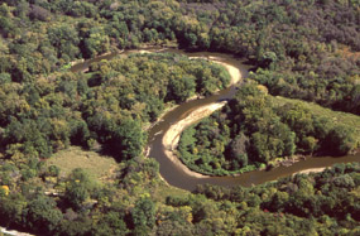

THE FIRE
The Cuyahoga is best known for being "the river that caught on fire". On June 22, 1969, in The Flats, sparks from a passing train ignited oily debris on the river's surface, creating a fire which burned for about 25 minutes and damaged two nearby train trestles. It was a minor event in the city, barely covered in the local press. Damage totaled only $50,000, and no photos or video exist of the fire itself, as new crews did not arrive until after it had been extinguished.
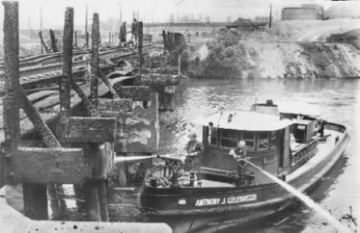
Some River! Chocolate-brown, oily, bubbling with subsurface gases, it oozes rather than flows. "Anyone who falls into the Cuyahoga does not drown," Cleveland's citizens joke grimly. "He decays". . . The Federal Water Pollution Control Administration dryly notes: "The lower Cuyahoga has no visible signs of life, not even low forms such as leeches and sludge worms that usually thrive on wastes." It is also -- literally -- a fire hazard.
The news of the Cuyahoga fire "went viral", as we would say today, being picked up by other national media outlets and soon entering the wider popular culture. It grabbed the public’s attention and imagination, in part because of the striking mental image of water burning – a seeming impossibility – but also because it so perfectly crystallized concern over the decaying, polluted, economically troubled rust-belt cities of the northeast and Midwest. It served as an irresistible metaphor for anything that people thought was wrong with American industry and urban life at the time. And, of course, it was an easy and convenient punch line to all sort of jokes, which made "the river that caught on fire" and Cleveland itself staples of late-night comedy routines for most of the following decade. It even found its way into popular music, with Randy Newman's "Burn On" from 1972 and R.E.M.'s "Cuyahoga" in 1986.
I was only six in 1969, so I don’t remember news of the fire itself, but I heard about it constantly in the 1970s and 1980s, always in the context of a joke at Cleveland’s expense. I remember seeing a well-known comedian in Columbus in 1987 who, I guess in an attempt to do some local "bits" for the crowd, threw in several references to the Cuyahoga fire. And just three months ago, while visiting my sister in California, I found myself talking to a colleague of hers from Washington State. Somehow the conversation turned to rivers, and he began extolling the beauty of the Pacific Northwest's waterways. I had no argument there, but he is the type of person who tends to praise his own region by denigrating everyplace else, and he soon started telling me how ugly, boring, and dirty the rivers were in "the east". He was aware I was from Ohio, and I knew what was coming next. Sure enough - "You even had that river catch on fire". 43 years after the fact, and it is still one of the first things that many people - at least those over a certain age - think of when they hear "Cuyahoga", "Cleveland", or perhaps even "Ohio".
POLLUTION
That TIME magazine article - entitled "America's Sewage System and the Price of Optimism" - was a long-planned piece on the nation's polluted waterways, and it mentioned the Potomac, the Mississippi, and other rivers before getting to the Cuyahoga. But the June fire gave the author a dramatic centerpiece for the story, and it was the image of that fire and the description of the Cuyahoga as one of the most polluted rivers in the country that stayed with readers. And the Cuyahoga was certainly polluted. As early as 1881, a Cleveland mayor had called it "an open sewer flowing through the city". Throughout the late 1800s and much of the 1900s, the steel mills, chemical plants, paper mills, paint plants and oil refineries lining the Cuyahoga's banks regularly poured untreated toxic chemicals, industrial dyes, acids, and petroleum products directly into the river. Slaughterhouses added grease, fat, blood and animal parts, while the city's sewer system contributed raw sewage and contaminated surface water from the entire Akron-Cleveland area. More often than not, parts of the river - particularly the sharp bends in the Flats where debris collected - were covered in an inches thick sludge of pollution. Water not completely covered in oil was often a bright orange color.

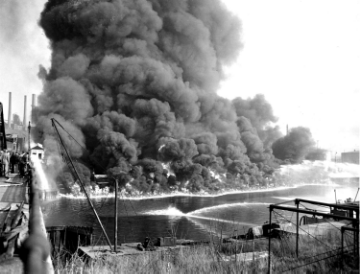
In 1926, the Jones Falls River in Baltimore had one-upped all the rest by not merely burning, but exploding:
It was early afternoon on June 8, 1926, when something -- a spark perhaps, or a lit cigarette -- touched off petroleum fumes in the underground conduits built in 1914 to contain the stream, which had become a stinking open sewer. In a series of explosions, manhole covers were blown into the air all along the Fallsway from Baltimore Street north to Madison Avenue. A sheet of flame 40 feet high in places spread along the open portion of the river from Baltimore Street to Pratt Street, setting fire to the roof of the Folly burlesque theater, the wooden understructure of the Lombard Street Bridge, and the abutments of the Pratt Street Bridge. Heavy smoke filled downtown streets. In the investigation that followed, fire and sewer officials determined that grease, oil and gasoline were being dumped regularly into the river.The city had a series of scares in the ensuing years. When grease and oil built up in the stream, police would be stationed nearby to warn people not to toss their cigarettes into the river.
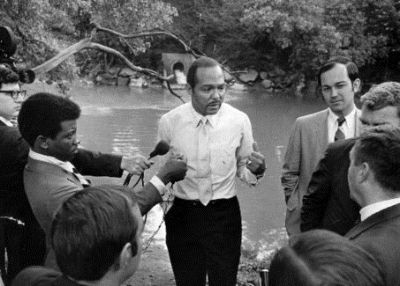
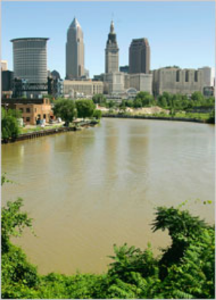
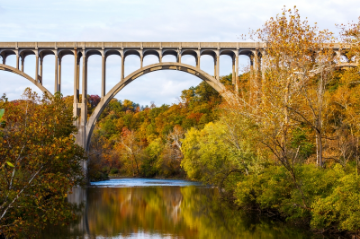
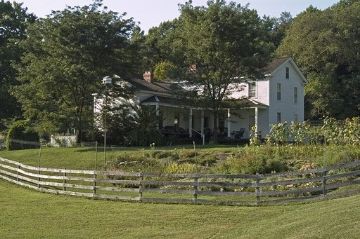

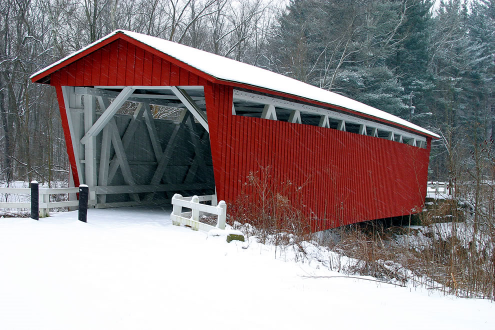
I composed 'Flames Along the Cuyahoga' a long time ago, so I am not certain exactly what my process was.
There are couple of themes that are common in my tunes. One is finding a tune that I am familiar with and some how inverting it. I often start in the middle, and then work my way out to the edges Another is that I compose on an instrument, not in my head. Something intentional or accidental will occur and catch my ear, and I will use it as a catalyst. After I have played the first phrase of whatever I have come up with, I try to determine what should come next, and then one thing leads to another. As the tune emerges, I will try multiple possibilities, some which work and others that lead nowhere and are abandoned. When the muse strikes, I have let it take over. I have to play the thing over and over so as not to find it gone the next morning. Sometimes I feel that a certain tune ought to exist: 'Big Scioty' needed a 'Little Olentangy' [both are rivers in Columbus], Mars Hill needed a tune, so I composed 'Mars Hill March'.
Here is what I recall for "Flames Along the Cuyahoga". Part of it was inspired by the opening lick in another tune which may have been "Ducks on the Millpond". I suspect that I was already in modal tuning. I had noted that hammer-ons and pull-offs never seemed to occur following thumb-strike, but only as a finger ornament, so I wanted to see what would happen if I placed a hammer-on following a thumb strike, which ended up in the B part of the tune. I am a native of Cleveland where I was living at the time. I think that I thought the Cuyahoga needed a tune...